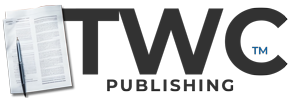Organizational Behaviour and Counterproductive Work Behaviour
No Fee – $9.99
| Case ID: | OBH-TECHS-20230701-3-V1 |
|---|---|
| License: | CC BY-NC-SA 4.0 |
| Pages | 3 pgs |
| Case Study Analysis | Not Included |
| Teaching Notes | Available |
| Ai Level | Content co-authored with the OpenAI API |
| Category(s) | Organizational Behavior – Rating: 10/10 |
The TechSolutions Inc. case study delves into the challenge faced by Mark Stevens, the CEO of a mid-size tech firm in San Francisco, as he grapples with rising counterproductive work behaviors (CWBs) within his organization. Despite the company’s financial success, reports of employees being consistently late, conflicts, and increased stress were threatening team cohesion and productivity. Recognizing that CWBs were symptoms of deeper organizational issues, Mark took decisive action. Implementing a two-pronged approach, he focused on comprehensive leadership training and employee wellbeing programs. Within six months, the measures resulted in reduced CWBs and improved employee morale. The case emphasizes the critical role of leadership and highlights the importance of addressing root causes rather than just symptoms. Through practical insights and integration of various disciplines, this case provides valuable lessons for future leaders and decision-makers.
The top 5 course categories:
- Organizational Behavior - Rating: 10/10 The case study focuses on counterproductive work behavior and its impact on organizational effectiveness, making it highly relevant to the field of organizational behavior.
- Leadership - Rating: 9/10 The case study prominently features the role of TechSolutions' CEO, Mark Stevens, in addressing the issue of CWBs. While it delves into leadership challenges, it could have provided more in-depth insights into Mark's leadership style.
- Human Resource Management - Rating: 8/10 The case study involves the Human Resources department's role in conducting internal surveys and implementing employee wellbeing programs, showcasing elements of HR management.
- Strategy - Rating: 7/10 The case briefly touches on Mark's strategic approach to combating CWBs by implementing a two-pronged strategy, but it could have provided more detailed strategic analysis.
- Ethics - Rating: 6/10 While ethics is mentioned in the foreword as a category, the case study does not heavily emphasize ethical dilemmas or decision-making processes, thus receiving a lower rating.
Weaknesses of this case structure:
- Realism and Data Analysis - The case study is described as a hypothetical scenario, which may limit its applicability to real-world situations. Additionally, it lacks detailed quantitative data analysis to support the claims and actions taken, which could have enhanced its credibility.
- Impact and Usefulness - While the case presents positive outcomes from the implemented measures, the overall impact on TechSolutions' long-term performance and sustained improvement is not explored thoroughly. This limits the case's usefulness in drawing comprehensive conclusions.
- Scenario and Storytelling - While the case touches upon the challenges faced by TechSolutions, it could have provided a more immersive and engaging storytelling approach to capture the reader's attention and emotional investment.
Strengths of this case structure:
- Practical Application - The case offers practical insights into managing counterproductive work behavior and provides potential strategies that other organizations could adopt, making it valuable for learning and application.
- Integration of Multiple Disciplines - The case effectively integrates various disciplines such as organizational behavior, leadership, and human resource management, allowing students to see the interconnectedness of these topics in a real-world context.
- Emphasis on Leadership - By highlighting the importance of leadership in addressing CWBs, the case underscores the significance of strong and responsive leadership in fostering a positive work environment.
- Timely and Relevant Topic - Given the rising interest in counterproductive work behavior and its impact on organizational effectiveness, the case's focus on this topic makes it timely and relevant for students in various disciplines.





